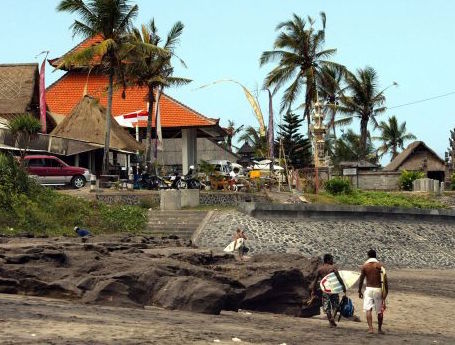Photo: Rick Stevens KRS
On the surface, Bali is a glamorous yet affordable tourist destination, with the luxury resorts, pool parties, sophisticated cocktails and memorable beach holidays. But behind the cheerful façade lies a serious environmental problem, that isn’t only a health hazard for the tourists – it is capable of sabotaging Bali’s environment in the next four-five years if nothing is done.
Unfortunately, apart from unforgettable culture and wonderful scenic views, Bali is also famous for its lack of proper water sanitation. Although the growing tourism industry is indeed beneficial for Bali’s economy, accounting for as much as 60% of it, this rapid growth and development is not backed up by sufficient infrastructure or natural resources. The demand is simply too high, and the island is struggling to provide to the locals and visitors alike.
The origins of Bali’s water crisis
Initially, it was hypothesised that the problem lies mainly in the lack of sanitized water and overall water contamination due to poor practices. However, it appears that there are much more problems, including but not limited to salt water intrusion, decreasing levels of water in rivers and lakes, land subsidence, and more. Several additional factors worsen the situation, such as:
- Insufficient, underfinanced water infrastructure system
- Rapid growth of tourism industry that isn’t showing any signs of slowing down
- Global environmental changes
- Malfunctioning sanitation facilities
- Improper use of agricultural additives, such as fertilizers, herbicides, animal manures, insecticides, and pesticides
- Hazardous chemical spills at local industrial sites
- Underground leakage of abandoned tanks and unmaintained piping
- And more
Natural sources of water pollution
In addition, there are some local natural sources of pollution that may severely affect the quality of water, including but not limited to:
- Microorganisms, such as bacteria, viruses, parasites. Although all water bodies are at risk, shallow wells are most susceptible to this issue. When water flows over the soil surface, these microorganisms may be picked up and carried to water bodies designed for human consumption.
- Nitrates and nitrites. Usually, abnormally high levels of these chemicals are due to human contamination – however, sometimes they may naturally be present in ground waters. This happens when nitrogens break down in soil and then get transported naturally to the water.
- Heavy metals. Soils and soils located under the surface of the ground may contain heavy metals such as arsenic, cadmium, chromium, lead, and selenium. Natural sources do not usually contain dangerously high levels – but together with human-induced contamination, it can add up quickly.
- Fluoride. In some water systems, fluoride has to be artificially added as it may be beneficial for dental health. However, naturally occurring fluoride can be harmful and damage tissues is consumed excessively.
- Seawater intrusion into aquifers. In some areas, there is a risk of sea water entering the aquifers, thus increasing the total salt content of the water. This is not a direct health risk as such – however, seawater leakage indicates overall poor quality of water. In addition, salty water can damage water heaters, valve seals and other parts of the aquifers.
The impact on the locals
The problem with fresh water on Bali isn’t exactly new – it has been there for several decades, but mainly affected poverty stricken regions which neither had tourist facilities nor managed to get any media attention.
For instance, in Tianyar, a poor region on the slopes of Mount Agung, charity organisations have been working hard for many years to provide quality water to the villagers, including building water tanks and delivering bottled water over the roughest periods.
Recently, however, the tables have started to turn, as with growing tourism and diminishing water supplies clean water access has become everyone’s problem. Indeed, the island’s four lakes are suffering from severe silting, over 50% of all rivers drying up completely during the dry season, and more and more water bodies getting affected by saltwater intrusion.
So, is it already too late, or can the situation be shifted?
Solutions for Bali’s water crisis
From tourist to locals and investors, a large number or stakeholders are involved in the crisis. It is necessary for representatives from all groups to join together and form some sort of an agreement and develop an action plan. Unfortunately, it seems like there is not too much time left, so it is imperative to act quickly.
First of all, it is extremely important to raise awareness about the water crisis. As mentioned above, until very recently, only the academia was interested in the subjects, and not even all locals were aware of the problems with drinking water on Bali. What’s even more concerning, many individuals involved in the tourism industry have no clue either, likely living unnecessary damage behind.
Next, it appears that from the technical standpoint, more rainwater-harvesting units are required to achieve better balance and provide more drinking water to the locals. Building these units could also potentially decrease the amount of runoff around Bali.
Finally, extensive research is required to identify and address additional issues that may be affecting the water supply on Bali. Hopefully, this will help the fragile tourist paradise to move forward and establish the sustainable future for the entire world to celebrate.










